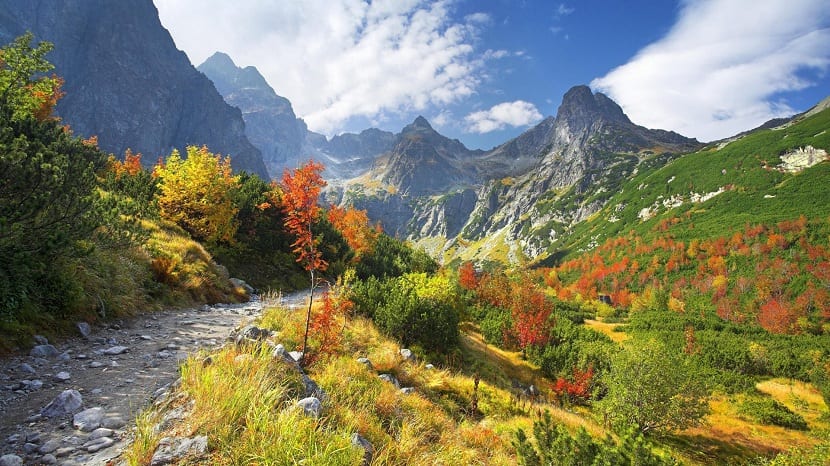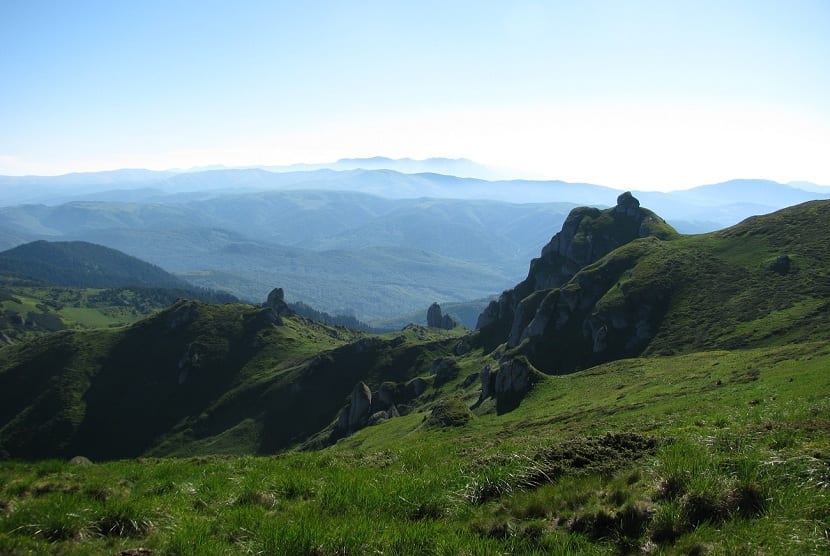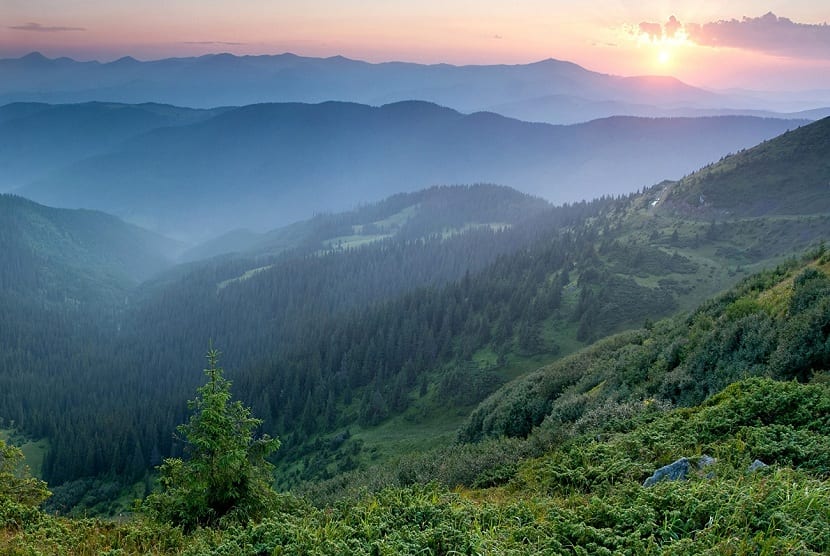
In other articles we were talking about Appalachian Mountains, Rocky Mountains and the himalayas. Here we are going to focus on the Carpathian mountains. It is the largest mountain range in Europe. It has an area of 162.000 square kilometers and is full of quality vegetation and fauna. In this article we are going to tell you everything you need to know about this mountain range of such majesty.
Do you want to learn more about the Carpathian Mountains? Keep reading.
Key features

This mountain range starts from a hill in Austria and extends for Slovakia, northern Hungary, southwestern Ukraine, southeastern Czech Republic and Western Serbia. As it is divided between so many countries, the management of its natural space, both flora and fauna and the different uses, must be shared between these countries.
The Carpathians have a mixed character. It is considered as an extension of the Alps. They agree in characteristic lagoons with these mountains and are indicated by the mode of genesis and structure. It also has a similar resemblance because of the climate there is. The type of weather It is responsible for the existence of a certain flora and fauna and the development of the soil with special characteristics.
At the extreme, the Carpathian Mountains are linked to mountain ranges called the Balkans. Along the mountains we can see a landscape with numerous pines in the higher lands and numerous jagged peaks and ridges. This means that the age of these mountains is quite recent, otherwise the peaks would be completely worn.
In the Carpathians there are some glacial valleys represented by furrows and glacial formations such as moraines and other deep basins. Glacial erosion is responsible for the modification of the terrain as well as the continuous action of external geological agents.
Half the terrain of the Carpathians is located at a height of less than 1.000 meters, so it cannot be considered a high altitude mountain. In fact, the highest peaks are at a height that does not exceed 2.700 meters. This is one of the reasons why its density of flora and fauna species is so high.
Biodiversity and climate

In proportion to the entire terrain, much of it is covered by vegetation and fauna. Its topography is composed of limestone and volcanic regions that are heavy, dislocated and discontinuous.
Biodiversity is subject to the decrease in rainfall that is experienced over the years and fluctuations in temperature. Along the history, there have been various glaciations that have created unique vegetation. There are many economic activities that are linked to the existence of unique vegetation and fauna. Therefore, numerous environmental impact studies have also been carried out on these ecosystems due to economic activities.
The vast majority of biodiversity is found in the lower parts, as this is where the humidity and density of the vegetation is greatest. As we go up in height, the amount of available oxygen is less and so is the atmospheric pressure. This makes the trees unable to expand or create forests.
In terms of climate, the western part has somewhat more influence from the Atlantic, with fairly high annual rainfall, the eastern part has more continental influence. The eastern part has less rainfall and humidity as it is indoors. The temperature ranges are also more extreme and the sudden changes in temperature are more marked between the seasons of the year.
One of the differences observed in these mountains with respect to rainfall is that the Tatra Mountains have the highest rainfall per year (between 1700 mm) and the part of Romania the least (with values of 1200 mm). For this reason, it can be seen how precipitation decreases along a gradient that runs from northwest to southeast. The part that receives the least rainfall is the Bucegi Mountains.
Human activities in the Carpathian mountains

The climatic conditions seen above are what make the vegetation unique compared to other mountain systems. In the carpathians there are no permanent snow belts or glaciers due to the low heights of its peaks and highest mountains. Unlike in the Alps where there are of these glaciers.
Human activities have had various impacts on the climate as greenhouse gas emissions have caused warming in these areas. All alpine environments are currently fragmented, so the vulnerability is much greater. Any environmental impact is more damaging than if they were not fragmented.
The human being with his economic activities is causing a kind of small-scale climate change that he is already studying and documenting. Though there is not much information on the changes in the distribution of plants and fauna at different heights, they are already being noticed.
We find more than 82 plant associations with more than 17 sub-associations that are damaged by human actions.
sustainable tourism

The growing demand for human activities in these environments makes the need to implement sustainable tourism arise. In this way we will be reducing the impacts that are formed in the Carpathians. Sustainable tourism is considered to be a way of developing different tourist activities with respect for the environment and the long-term preservation of natural, cultural and social resources.
This is a way to take advantage of all these resources in a balanced and equitable way. Nor can we afford to have mountains of such dimensions and with a special richness and not be able to enjoy them in a responsible way.
As in all natural aspects of this world, we have to learn to introduce conservation values into society so that we can continue to enjoy natural environments as precious as the Carpathian mountains.
I hope that with this information you can learn more about this natural environment.
Hello, I am interested in knowing what are the human activities that take place in the Carpathian Mountains, if there are places where people simply buy their house to live there in a calm and peaceful way, or are they Parks where only tourist trails are allowed? Thanks a lot. 31/01/2021